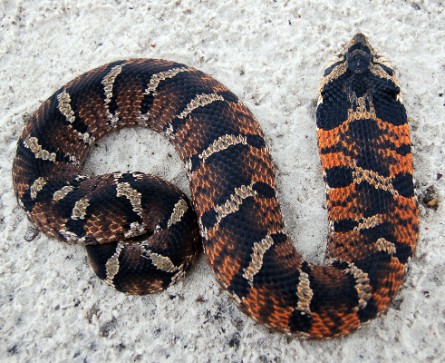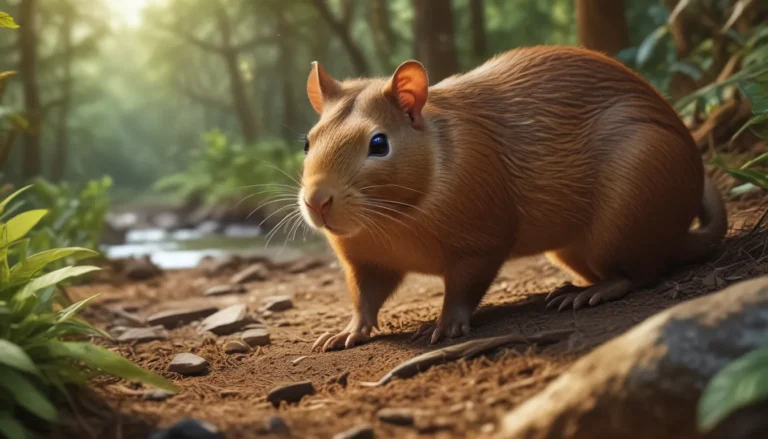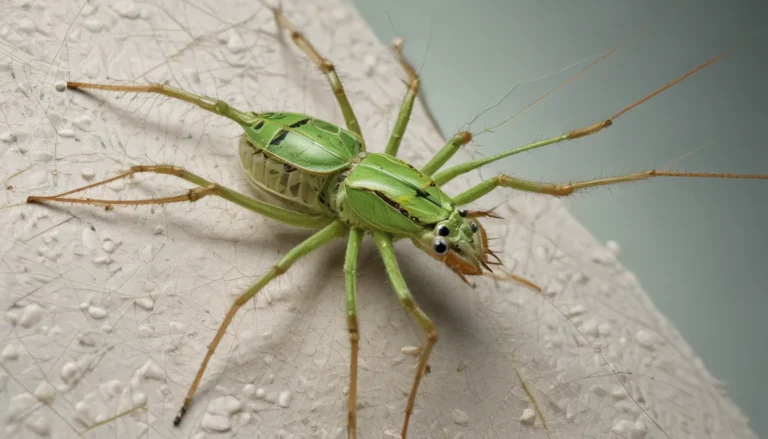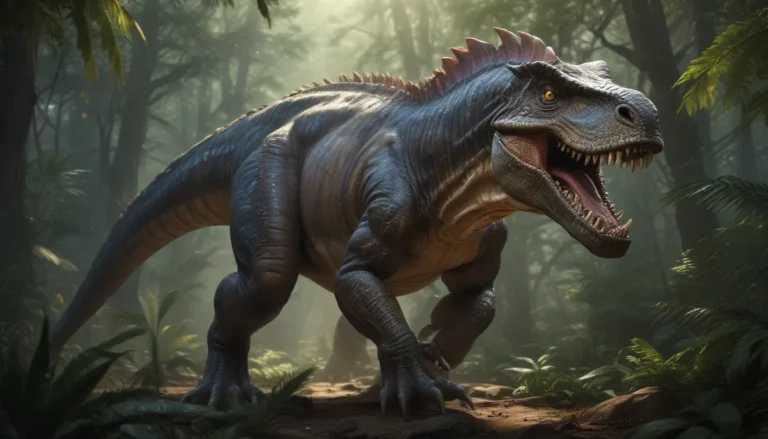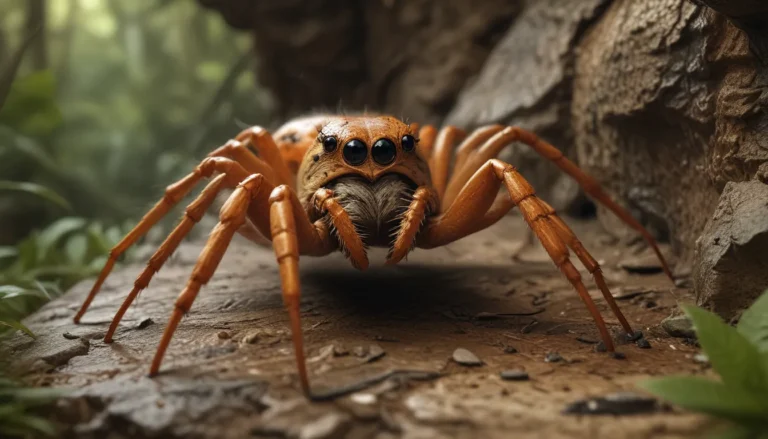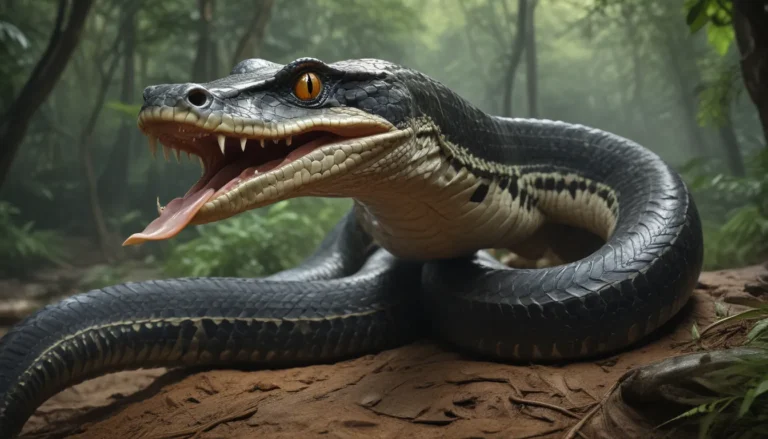The pictures we use in our articles might not show exactly what the words say. We choose these pictures to make you interested in reading more. The pictures work together with the words but don’t take their place. The words still tell you the important facts.
Welcome to the captivating world of the Eastern Hognose Snake! These remarkable reptiles, found across North America, never fail to intrigue both herpetologists and animal enthusiasts alike. With their unique appearance and fascinating behaviors, Eastern Hognose Snakes truly stand out in the vast realm of wildlife. Let's dive into 15 incredible facts about these amazing creatures that will leave you in awe of nature's ingenuity.
1. Nature’s Little Actors
Eastern Hognose Snakes are renowned for their theatrical displays when threatened. These dramatic performances are truly a sight to behold! When faced with danger, they put on an impressive show:
- They puff up their bodies to appear larger
- Flatten their necks, resembling a cobra
- Hiss loudly to intimidate predators
- As a last resort, they play dead by rolling onto their backs and sticking out their tongues
This remarkable behavior has earned them the nickname "drama queens" of the snake world!
2. The Smoke-Blowing Trick
As if their acting skills weren't impressive enough, Eastern Hognose Snakes have another trick up their scaly sleeves. They can hiss or blow air out of their noses, creating a tiny puff of "smoke." This unique ability adds to their repertoire of captivating behaviors and further enhances their defensive arsenal.
3. Toad Connoisseurs
When it comes to dining, Eastern Hognose Snakes have a rather peculiar taste. These slithery gourmets have a strong preference for toads, particularly those with toxic skin. What's even more impressive is their immunity to these toxins, allowing them to enjoy their slimy meals without any adverse effects. Talk about having an iron stomach!
4. Masters of Disguise
Eastern Hognose Snakes are true masters of camouflage. They sport a variety of colors and patterns, ranging from:
- Yellow and brown
- Gray with blotches
- Speckled patterns
This diverse palette allows them to blend seamlessly into their surroundings, making them experts at staying hidden and surprising both prey and observers alike.
5. The Upturned Snout
One of the most distinctive features of the Eastern Hognose Snake is its upturned snout, reminiscent of a pig's nose. This unique anatomical trait not only adds to their charm but also serves a practical purpose. The specialized snout helps them in their foraging activities, particularly when digging for prey or burrowing into loose soil.
6. Underground Experts
Speaking of burrowing, Eastern Hognose Snakes are true experts when it comes to subterranean living. Equipped with their pointed snouts and stout bodies, these snakes are adept at disappearing into loose soil, sand, or leaf litter. This skill serves them well in both hunting and hiding from potential predators.
7. Egg Thieves Extraordinaire
While toads may be their preferred meal, Eastern Hognose Snakes have a particular fondness for bird eggs as well. These clever serpents seek out nests and devour the eggs with gusto, showcasing their resourcefulness and adaptability when it comes to finding food.
8. Size Matters: Female Dominance
In the world of Eastern Hognose Snakes, females reign supreme when it comes to size. While males typically reach around 2 feet in length, females can grow up to an impressive 3 feet long. This sexual dimorphism highlights the intriguing dynamics within the species and may play a role in their mating behaviors.
9. Mildly Venomous, But Harmless to Humans
Despite possessing rear fangs and being mildly venomous, Eastern Hognose Snakes pose no significant threat to humans. Their venom is specifically adapted for subduing amphibian prey and is essentially harmless to people. However, some individuals may experience an allergic reaction, resulting in local swelling and other minor symptoms.
10. Widespread Distribution
Eastern Hognose Snakes have an impressive range across North America. They can be found:
- From Ontario, Canada, down to Florida
- In the central United States
- Along the east coast
This vast geographic distribution is a testament to their adaptability to various environments and climates.
11. Terrestrial Lifestyle
Unlike some of their serpentine cousins, Eastern Hognose Snakes are not particularly fond of water. They prefer to remain on land, utilizing their excellent burrowing skills for survival rather than venturing into aquatic habitats. This preference for terra firma shapes their habitat choices and behaviors.
12. Seasonal Sunbathers
Eastern Hognose Snakes are diurnal creatures, meaning they're active during the day. Their peak activity period typically spans from April to September, coinciding with the warmer months when they emerge from hibernation. However, their active season can vary depending on their geographic location:
- In northern climates, they may retreat into hibernation as early as September or October
- In southern regions, they might remain active until November
- Some individuals in Florida and along the Gulf Coast have been spotted active even during winter months!
13. Solo Hibernators
When it comes to braving the cold months, Eastern Hognose Snakes prefer to go it alone. They hibernate individually in burrows, either digging their own or repurposing abandoned mammal dens. These winter retreats can reach depths of 25 centimeters or more, providing a cozy shelter from the harsh elements.
14. Unique Breeding Habits
The love life of Eastern Hognose Snakes is quite interesting. They typically mate in April and May, with both males and females having multiple partners during the breeding season. Interestingly, some females have been observed traveling past suitable nesting sites to reach communal nesting areas, suggesting a social aspect to their reproduction.
15. Hands-Off Parenting
When it comes to parenting, Eastern Hognose Snakes take a rather hands-off approach. Females lay between 8 to 40 eggs (averaging about 25) in June or early July, often in small soil depressions or under rocks. Once the eggs are laid, the mother's job is done. The eggs hatch after about 60 days, and the young snakes are immediately independent, ready to face the world on their own.
Conclusion: Embracing the Eastern Hognose
These 15 fascinating facts about the Eastern Hognose Snake showcase just how remarkable these creatures truly are. From their theatrical defensive displays to their specialized diets and unique anatomical features, these snakes continue to captivate and inspire admiration for their resilience and adaptability.
As we learn more about these enigmatic reptiles, it's crucial to remember the importance of conservation efforts. While Eastern Hognose Snakes are not currently classified as endangered, they face threats from habitat loss and human activities. By spreading awareness and fostering a deeper appreciation for these amazing animals, we can contribute to their protection and ensure that future generations can continue to marvel at nature's little actors.
